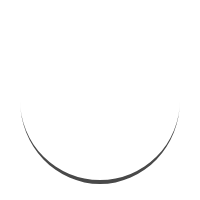Abstract
Free full text

Full text links
Read article at publisher's site: https://doi.org/10.1038/s41598-018-20305-4
Read article for free, from open access legal sources, via Unpaywall:
https://www.nature.com/articles/s41598-018-20305-4.pdf
HAL Open Archive
https://hal-pasteur.archives-ouvertes.fr/pasteur-02185035
Citations & impact
Impact metrics
Citations of article over time
Alternative metrics
Article citations
Nonreciprocity in CHIKV and MAYV Vaccine-Elicited Protection.
Vaccines (Basel), 12(9):970, 27 Aug 2024
Cited by: 0 articles | PMID: 39340002 | PMCID: PMC11435824
Mouse Models of Mayaro Virus.
Viruses, 15(9):1803, 24 Aug 2023
Cited by: 2 articles | PMID: 37766210 | PMCID: PMC10534528
Review Free full text in Europe PMC
Understanding the Biology and Immune Pathogenesis of Chikungunya Virus Infection for Diagnostic and Vaccine Development.
Viruses, 15(1):48, 23 Dec 2022
Cited by: 3 articles | PMID: 36680088 | PMCID: PMC9863735
Review Free full text in Europe PMC
Characterization and Involvement of Exosomes Originating from Chikungunya Virus-Infected Epithelial Cells in the Transmission of Infectious Viral Elements.
Int J Mol Sci, 23(20):12117, 11 Oct 2022
Cited by: 6 articles | PMID: 36292974 | PMCID: PMC9603488
A Brighton Collaboration standardized template with key considerations for a benefit/risk assessment for an inactivated viral vaccine against Chikungunya virus.
Vaccine, 40(35):5263-5274, 15 Jun 2022
Cited by: 0 articles | PMID: 35715351 | PMCID: PMC9197579
Go to all (25) article citations
Data
Data behind the article
This data has been text mined from the article, or deposited into data resources.
BioStudies: supplemental material and supporting data
Similar Articles
To arrive at the top five similar articles we use a word-weighted algorithm to compare words from the Title and Abstract of each citation.
Loss of TLR3 aggravates CHIKV replication and pathology due to an altered virus-specific neutralizing antibody response.
EMBO Mol Med, 7(1):24-41, 01 Jan 2015
Cited by: 57 articles | PMID: 25452586 | PMCID: PMC4309666
A potent neutralizing IgM mAb targeting the N218 epitope on E2 protein protects against Chikungunya virus pathogenesis.
MAbs, 7(6):1178-1194, 25 Aug 2015
Cited by: 8 articles | PMID: 26305993 | PMCID: PMC4966480
A high-dose inoculum size results in persistent viral infection and arthritis in mice infected with chikungunya virus.
PLoS Negl Trop Dis, 16(1):e0010149, 31 Jan 2022
Cited by: 5 articles | PMID: 35100271 | PMCID: PMC8803182
Development of Vaccines for Chikungunya Fever.
J Infect Dis, 214(suppl 5):S488-S496, 01 Dec 2016
Cited by: 36 articles | PMID: 27920179 | PMCID: PMC5137239
Review Free full text in Europe PMC





